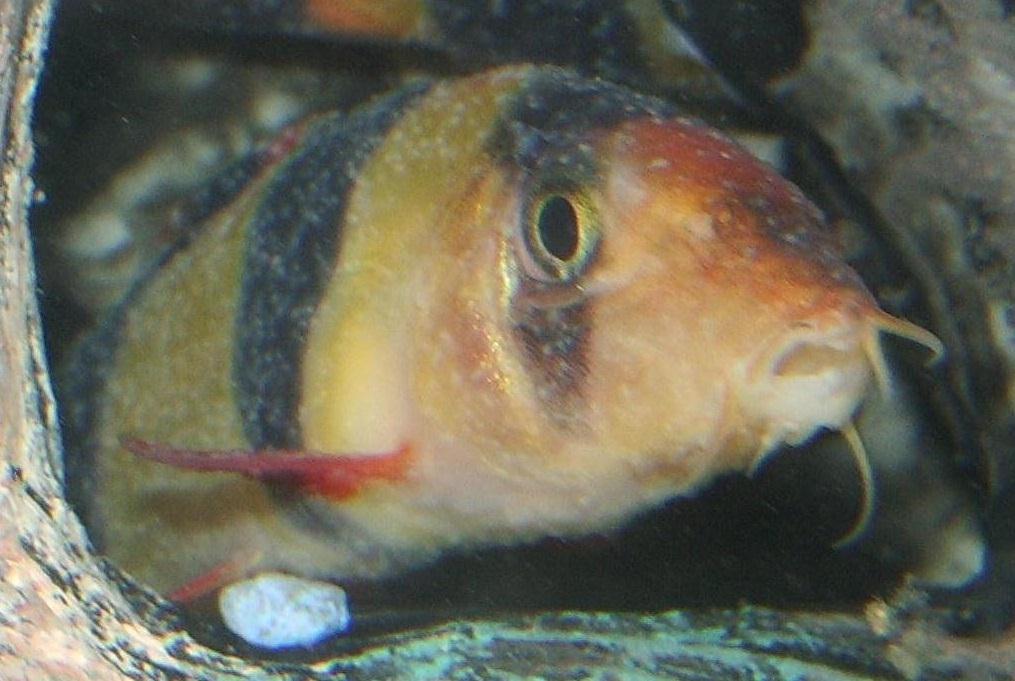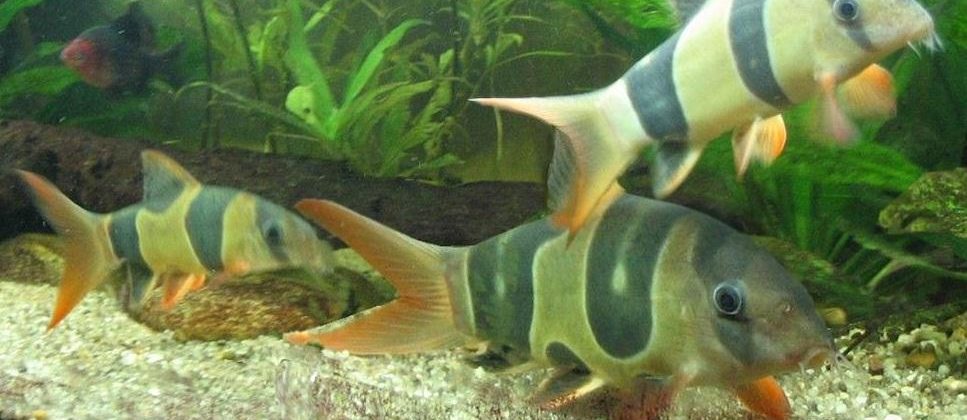Well, this fish is only known as the Clown Loach. Which is kind of fitting, these fish are very entertaining.
| Common name: | Well, this fish is only known as the Clown Loach. Which is kind of fitting, these fish are very entertaining. |
| Scientific name: | Chromobotia Macracanthus |
| Care Difficulty: | Medium |
| Adult Size: | 13cm to 30cm (5 to 12 inches)These fish grow much larger in the wild than they do in captivity. |
| Original Origin: | The Indonesian islands of Borneo and Sumatra. |
| Tank Size/Setup: | Recommend at least 80 gallons or 300 litres to house Clown Loaches. Yes, you read correctly! That is what should be used for these gorgeous fish in preparation for the large size to which they will grow. They should also be bought in groups of 4 or more to bring out the best in their behaviour. They will enjoy some hiding places and some strong vegetation. Rock caves or wooden alternatives go down well and they will make good use of them. Make sure your lighting is not too bright as this may cause them to hide while the lights are on. Clowns prefer fast flowing water that replicates their natural environment. You can use a power-head to create a unidirectional current in the tank which will be similar to a river current. Use a fine gravel substrate and make sure your water is always in top condition by using a good quality filtration system and doing frequent water changes. |
| Temperament / Compatibility: | Peaceful. The Clown Loach doesn’t have an aggressive bone in its body and despite their size they can be quite timid if housed with other aggressive mates. So only keep them with other peaceful fish of the same size or smaller. The Tiger Barb is a well known good companion. |
| Water Temperature: | 25°C to 30°C (77°F to 86°F) |
| Water Hardness: | 80 to 200ppm (5 to 11°dgH/kH) |
| Water pH: | 6.5pH to 7.5pH |
| Fish Food: | Clowns are omnivorous and will eat just about anything they come across. Feeding them a variety of foods will be good for their health. Make sure they get enough protein from live or frozen foods like Bloodworm, Brine Shrimp or Tubifex worms. Other foods they will eat include vegetable matter, flake foods and sinking pellets. Remember though that they are middle to bottom dwellers and often get left out if you have other fish that take all the food from the top. Clown Loaches themselves only really eat from the top if they are 100% relaxed and happy in their environment. |
| The Sexes: | The females have slightly bigger bodies than the males. Without having a few fish together it can be difficult to tell them apart. |
| Breeding Clown Loaches: | Well… breeding clown loaches is quite a short topic to write about. It has never been done in captivity! Scientists have been able to treat the fish with hormones to induce breeding in captivity, but that’s not natural and it’s beyond the means of any aquarist. So, if your Clowns ever lay eggs, take a picture of them. You may just be the first person to ever get it right and have pictures to prove it. |
| Average Lifespan: | 10 years and longer |
| Comments: | As you can see from the required tank size, these fish are not really for beginners. Although that hasn’t stopped them from becoming very popular. The tank size, extra equipment needed (like power-heads), a tip-top quality filtration system and regular tank maintenance required, all point to the fact that owners should have a little experience. One point to note is that they are very susceptible to ick and care should be taken when treating them. They have little or no scales and many ick treatments can hurt them if not used carefully. Always read the instructions. When adding them to an aquarium, make sure that the tank has fully completed the nitrogen cycle. They are not very tolerant of toxins in the water. These fish have a sharp spine located just below the eye that they can stick out when needed. It is recommended to use a solid container when transporting them as they can make holes in plastic bags. The spine can also get tangled in nets while trying to catch them. |




Leave a Reply